Fixing a Non-Spinning Turntable
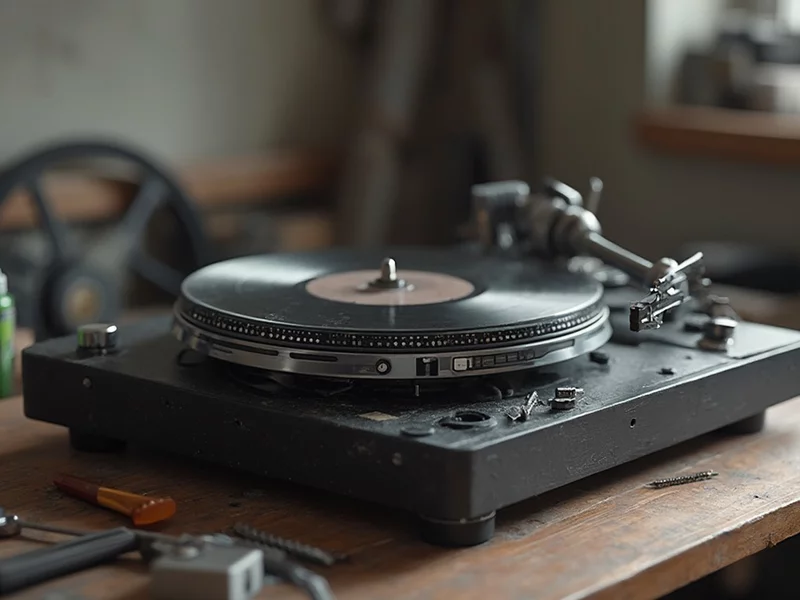
When your turntable suddenly stops spinning, it can feel like a musical tragedy. However, understanding the typical causes can help you solve the issue in no time. Let’s explore the essential steps to troubleshoot and revive your beloved analog device!
What You Will Learn
- Identify common issues that prevent your turntable from spinning, such as a malfunctioning belt, motor failure, or electrical problems.
- Follow a structured troubleshooting guide to check the power source, inspect the belt, and listen for motor sounds.
- Understand the roles of key turntable components to aid in effective diagnosis and maintenance.
- Learn the steps to replace a worn-out drive belt easily, ensuring your turntable performs optimally.
- Discover how to address motor issues, including when to tackle repairs yourself or seek professional help.
- Utilize a strobe disc for speed adjustment, enhancing the sound quality of your records.
- Achieve optimal sound quality by properly aligning your cartridge and tonearm.
Common Turntable Issues and Troubleshooting Flow
Understanding why your turntable isn't spinning and how to fix it with these common issues and a step-by-step troubleshooting guide.
Common Issues Leading to Non-Spinning Turntables
- • Malfunctioning Belt
- • Motor Failure
- • Electrical Issues
These are the primary culprits we often find.
Initial Troubleshooting Steps
- Check Power Source
- Inspect the Belt
- Listen for Motor Sounds
- Examine Wiring
A quick check can often resolve the issue.
Essential Steps to Identify Why Your Turntable Isn't Spinning
As a passionate audiophile, I understand how frustrating it can be when your turntable suddenly stops spinning. Don't panic! There are several common issues that can cause this problem, and with a little troubleshooting, you can often pinpoint the culprit. Let’s dive into the frequent problems you might encounter and how to address them.
Common Turntable Issues: What to Look For
There are three main issues that can often lead to a non-spinning turntable:
- Malfunctioning Belt: The drive belt can wear out over time, losing its grip on the platter. For more details on this, you can refer to resources like Hi-Fi Music Systems which explain how a worn belt can prevent your record player from spinning.
- Motor Failure: If the motor isn't functioning correctly, it won't spin the platter properly.
- Electrical Issues: Loose connections or faulty wiring can disrupt power to the turntable. KB Audio provides further insights into electrical problems and other reasons a turntable might not spin.
We often see these problems at Turntable Repair Australia, so don’t feel alone! By checking for these signs, you’ll be on your way to diagnosing the issue.
How to Perform Initial Troubleshooting
Once you’ve identified potential issues, it's time to troubleshoot. Here’s a straightforward step-by-step guide to help you get started:
- Check the Power Source: Ensure the turntable is plugged in and the outlet is functioning.
- Inspect the Belt: Remove the platter and check if the belt is intact and properly positioned.
- Listen for Motor Sounds: Power on the turntable and listen for any sounds coming from the motor.
- Examine Wiring: Look for any visible damage or loose connections in the wiring.
Engaging in these troubleshooting methods can help narrow down the problem area. Sometimes, a simple fix is all it takes to revive your beloved turntable! For additional troubleshooting tips, Retrolife Player offers a useful guide on how to fix a record player.
Understanding Turntable Components and Their Roles
To effectively diagnose and repair your turntable, it's important to understand its main components and their functions:
- Motor: Powers the rotation of the platter and is critical for performance.
- Platter: The platform on which your records sit, rotating to play music.
- Drive Belt: Connects the motor to the platter, transferring the motor's power.
- Tonearm: Holds the cartridge and stylus, playing the grooves in your vinyl records.
Recognizing each component's purpose will not only help you troubleshoot effectively but also empower you to maintain and care for your turntable like a true audiophile!
Did You Know?
According to a recent survey, over 70% of audiophiles report that regular maintenance significantly enhances their listening experience. Just a few small adjustments can keep your turntable in pristine condition!
Effective Repair Solutions for Non-Spinning Turntables
Replacing the Turntable Belt: A Simple Fix
One of the most common reasons your turntable might not be spinning is a worn-out drive belt. Replacing this belt is often an easy fix and can revive your beloved analog device! To get started, gather the following tools:
- New drive belt (make sure to check the model for the right size)
- Screwdriver (usually Phillips or flathead, depending on your turntable)
- Clean cloth or brush for dust
To replace the belt, first, unplug your turntable! This is a crucial safety measure. Next, remove the platter and access the old belt. Gently slip the new belt onto the motor spindle and around the platter. Double-check that it sits snugly, then reassemble your turntable, plug it back in, and enjoy the revitalized sound!
Motor Repair Techniques: When to DIY and When to Seek Help
Motor issues can be tricky, but with a little guidance, you can determine if you should tackle the repair yourself or call in a professional. Here are some common motor problems and their solutions:
- Humming noises: This might indicate a loose connection. Check the power supply and cables for any visible issues.
- Slow or erratic spinning: If your turntable is not consistent, consider lubricating the motor or the spindle.
- No movement at all: If there’s no action, it may be time to get in touch with a specialist, as the motor might need replacement.
Remember, if you feel uncertain or the problem seems too complex, don’t hesitate to reach out to us at Turntable Repair Australia for expert assistance! Our goal is to empower you with the right knowledge and resources.
Utilizing a Strobe Disc for Speed Adjustment
Using a strobe disc is an excellent way to ensure your turntable spins at the correct speed! Here’s how you can do it:
- Place the strobe disc on your turntable platter.
- Turn on the turntable and let it spin.
- Observe the patterns on the strobe disc under a light source. If the lines appear to be moving, adjust the speed until they stay still.
This simple yet effective method can dramatically enhance the sound quality of your records, allowing you to experience the full richness of analog sound!
Turntable Alignment: Achieving Optimal Sound Quality
Proper alignment of your cartridge and tonearm is crucial for achieving the best audio fidelity. If misaligned, it can lead to distortion and wear on your records. Here are some steps to ensure your setup is spot-on:
- Use a protractor for accurate alignment.
- Adjust the tonearm height so that the stylus tracks evenly.
- Double-check the tracking weight according to your cartridge specifications.
Aligning your turntable might take a bit of patience, but the reward is a fantastic listening experience! Feel free to reach out to us for any tips or troubleshooting as you perfect your setup.
Frequently Asked Questions (FAQs)
- Q: Why isn't my turntable spinning?
- A: Common reasons include a malfunctioning drive belt, motor failure, or electrical issues. Begin by checking the power source, inspecting the belt, and listening for motor sounds.
- Q: How do I know if my drive belt needs to be replaced?
- A: If your platter is not spinning or spinning inconsistently, and the belt appears loose, stretched, or broken, it likely needs replacement. You can typically inspect it by removing the platter.
- Q: What should I do if my turntable motor is humming but not spinning the platter?
- A: Humming noises might indicate a loose connection or a motor that needs lubrication. Check power cables and consider lubricating the motor or spindle. If the issue persists, professional help may be needed.
- Q: How can a strobe disc improve sound quality?
- A: A strobe disc helps you accurately adjust your turntable's speed, ensuring that records play at their intended RPM. Correct speed prevents pitch distortion and ensures accurate musical reproduction, thereby enhancing sound quality.
- Q: Is it important to align my cartridge and tonearm?
- A: Yes, proper alignment is crucial. Misalignment can cause sound distortion, premature record wear, and damage to your stylus. Using a protractor and adjusting tracking weight are key steps for optimal fidelity.
Recap of Key Points
Here is a quick recap of the important points discussed in the article:
- Check for common issues like a malfunctioning belt, motor failure, or electrical issues that could prevent your turntable from spinning.
- Perform initial troubleshooting by verifying the power source, inspecting the drive belt, listening for motor sounds, and examining wiring for damage.
- Understand the key components of your turntable, such as the motor, platter, drive belt, and tonearm, to effectively diagnose and maintain your device.
- Replace a worn-out drive belt to restore functionality, ensuring safety by unplugging the turntable before starting repairs.
- Use a strobe disc to accurately adjust the speed of your turntable for optimal sound quality.
- Align your tonearm and cartridge properly to achieve the best audio fidelity and prevent record wear.
Popular Posts
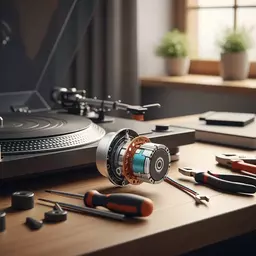 Are you ready to elevate your turntable's performance? Understanding the nuances of motor replacemen
Are you ready to elevate your turntable's performance? Understanding the nuances of motor replacemen
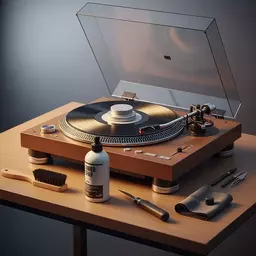 Have you ever wondered how a little maintenance can dramatically enhance your turntable's performanc
Have you ever wondered how a little maintenance can dramatically enhance your turntable's performanc
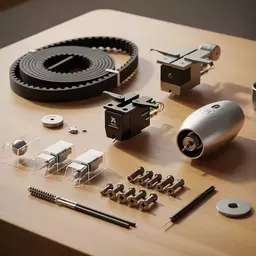 Have you ever found yourself frustrated with a turntable that just won't play right? The good news i
Have you ever found yourself frustrated with a turntable that just won't play right? The good news i
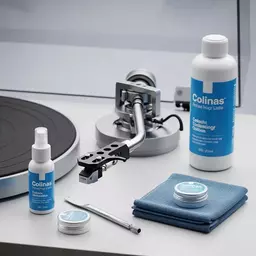 Have you ever considered how the condition of your tonearm affects the music you love? Proper tonear
Have you ever considered how the condition of your tonearm affects the music you love? Proper tonear
